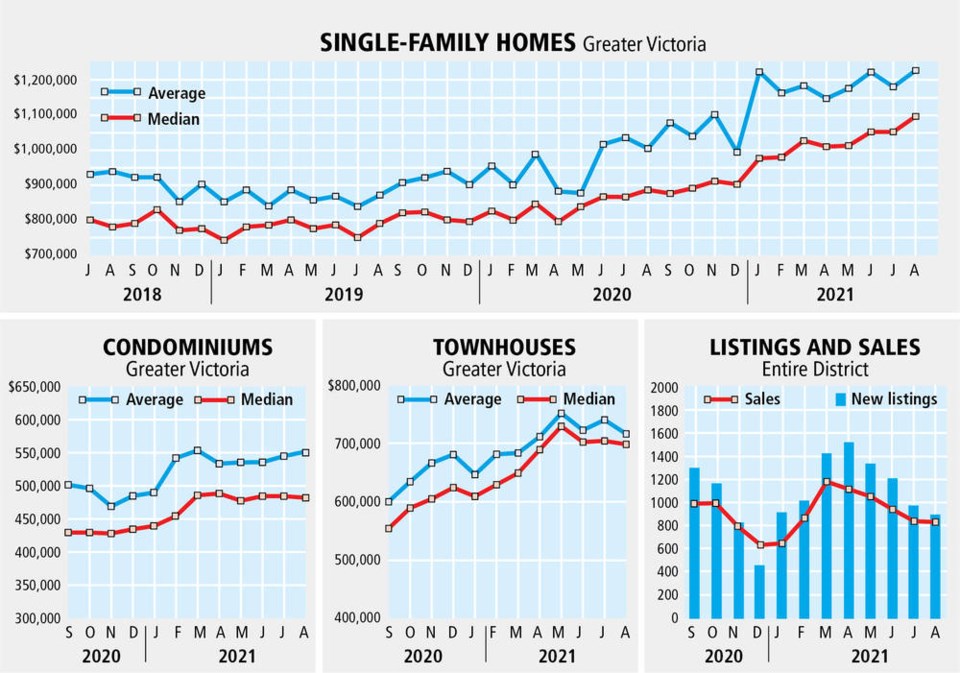A lack of supply slowed the housing market in August and drove prices up again in the region, according to numbers released Wednesday by the Victoria Real Estate Board.
Last month, 831 properties sold in the region, a drop from 979 sales in August last year and slightly less than the 835 sales recorded in July of this year.
The benchmark price of a single-family home in the region hit $1.005 million last month, up from $803,700 at the same time last year, and $993,100 in July 2021.
Board president David Langlois said the market is starved for inventory.
“It should come as no surprise that with half the available inventory of last August, we sold fewer homes this August,” said Langlois, adding sales would have been comparable with, if not greater than, last August if inventory wasn’t so low.
At the end of August, there were just 1,120 active listings in the region, a 56.7 per cent drop from the 2,584 available at the end of August 2020, and an 11.8 per cent drop from the 1,270 active listings at the end of July 2021.
Langlois said the 10-year running average for sales in the month of August was 675 properties.
“So with 831 properties changing hands this August, it is clear that our market remains very robust and that lack of supply is the biggest issue impacting attainability for our community,” he said.
The region saw condominium sales increase 31.7 per cent from August 2020 with 345 units sold, while the benchmark price for a condo in the region was $538,800, up from $475,500 at the same time last year.
Single-family home sales were down 29.9 per cent from August 2020, with 357 sold.
There were 86 townhome sales last month, compared with 140 in August last year, and the benchmark price of a townhome in the region increased significantly to $714,100 from $597,600 in August 2020.
Despite measures intended to help buyers — such as tax-free savings accounts, extended mortgage terms or altering stress-test provisions — Langlois said lack of supply means prices will continue to rise.
“It will do nothing to slow the price appreciation that the systemic lack of housing supply continues to fuel.”
Langlois said during the federal election campaign, the board is pushing for commitments such as infrastructure grants as an incentive for density improvements in municipalities, increasing on-campus housing, supporting co-op and leasehold developments and using surplus federal lands to add to housing stock.
“Debates about bidding processes and foreign buyers do not offer material solutions to improve supply nor the attainability of housing,” he said.
“The municipal, provincial and federal governments’ failure to support real growth and diversity in housing stocks has created the market conditions we find ourselves in today.”



